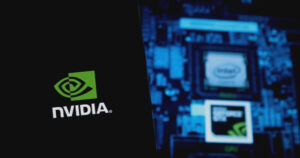Unlocking the Future of Computational Power: Blue Lion Supercomputer
By Terrill Dicki
Published: June 10, 2025
In a groundbreaking development for the scientific community, Germany’s Leibniz Supercomputing Centre (Leibniz-Rechenzentrum, LRZ) is set to launch the Blue Lion supercomputer. Leveraging NVIDIA’s cutting-edge Vera Rubin architecture, this new machine promises to elevate computational capabilities to unprecedented levels—offering approximately 30 times more computing power than the existing SuperMUC-NG system.

What is the Vera Rubin Architecture?
The Vera Rubin architecture signifies a transformative leap in supercomputing technology. It incorporates the Rubin GPU, NVIDIA’s successor to the Blackwell, along with the Vera CPU—NVIDIA’s first custom CPU specifically designed to operate harmoniously with its GPU counterparts. This integration allows for a robust platform that combines simulation, data management, and artificial intelligence into one high-performance engine. Its focus on shared memory and in-network acceleration creates new avenues for innovative research.
Specifications and Capabilities of Blue Lion
Built by Hewlett Packard Enterprise (HPE), Blue Lion is equipped with the next-generation HPE Cray technology. Featuring advanced storage systems and high-speed interconnects, this machine is designed with a completely liquid-cooled architecture that efficiently dissipates heat, even repurposing warm water to heat nearby facilities—an innovation in sustainability.
Blue Lion is tailored to handle a variety of complex research studies, including climate models, physics simulations, turbulence analyses, and machine learning. Its scalable architecture allows for seamless collaboration across research projects throughout Europe, uniting scientists in their quest for groundbreaking discoveries.
The Doudna Supercomputer: A Complementary Development
Across the Atlantic, another revolutionary project is taking shape. The Doudna supercomputer, named after Nobel laureate Jennifer Doudna, is being developed at the Lawrence Berkeley National Laboratory. Also utilizing the Vera Rubin architecture, this supercomputer will serve an ambitious network of over 11,000 researchers. Built by Dell Technologies, it promises to optimize energy usage while providing superior performance, especially for fields like fusion energy research, materials discovery, and biological studies.
The Doudna supercomputer’s capability to process vast quantities of data from multiple sources in real time, supported by NVIDIA’s Quantum-X800 InfiniBand networking, signifies a major advancement in the efficiency of scientific workflows.
The Implications of Vera Rubin’s Integration
The emergence of both Blue Lion and Doudna marks a pivotal moment in high-performance computing. By showcasing the undeniable synergy between AI integration and real-time data processing, these supercomputers are redefining the landscape of scientific research. As data-driven discoveries become more vital, the need for adaptable and powerful computational infrastructures is greater than ever.
At Extreme Investor Network, we’re excited about what these advancements mean for the future of technology and science. As supercomputers like Blue Lion and Doudna come online, we can expect a transformative impact on how scientific inquiries are conducted and how data is utilized. The future is bright, and we’re here to guide you through this evolving landscape, ensuring you remain at the forefront of technological advancements.
Stay tuned to Extreme Investor Network for more insights on cryptocurrency, blockchain technology, and the innovations that are shaping our world.
Image source: Shutterstock

